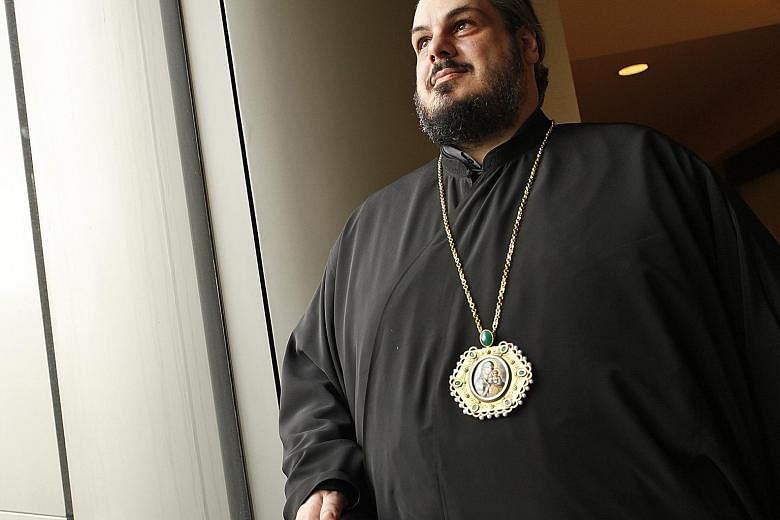It might be led by a Greek archbishop, but the sea of faces worshipping at the Holy Resurrection Orthodox Christian Cathedral is largely from here, with more than 40 of its 70 regular worshippers Singaporeans.
Its readers, chanter and choir are also mostly Singaporean while the remaining attendees are from countries such as Australia, Romania and Serbia.
Services are conducted in English by Metropolitan Konstantinos Tsilis, 44, who was a print and radio journalist.
Some of the church's Singaporean congregants left Protestant churches in search of an organisation which has the same teachings and worship practices as the Apostles centuries ago.
Explaining the trend, Metropolitan Konstantinos said: "The Orthodox faith attracts Protestant groups and also those from outside the Christian faith. We have an answer for those searching for the roots of Christianity and wanting to learn about the tradition of the Christian faith.
"They might come to know about us from visits to Orthodox churches while travelling overseas. A handful of them come because of mixed marriages."
Metropolitan Konstantinos was ordained head of the Orthodox Metropolitanate of Singapore and South Asia to oversee Orthodox Christians in the region in 2011. About 30 clergy from the region are under his charge.
His seat and the headquarters of the church in Asia are in Singapore.
"Here we can worship freely. It's a good base point with the rest of the region as well," he said.
One of the Singaporeans attending the church, Mr Jeremiah Ong, 39, a foreign exchange trader and music teacher, grew up a Methodist and attended Anglican services before he joined the Orthodox Church early last year.
Mr Ong said: "I was wondering why services of the past differed from what is practised today, so I started reading about the beliefs and practices of the early church online."
He said he was moved by the services."I liked the focus on scriptures... All my senses were evoked by the use of religious icons and incense for instance."
Last Friday morning, worshippers gathered at the cathedral's small hall, housed within the Catholic Archdiocesan Education Centre in Upper Serangoon, to decorate Jesus Christ's "tomb" with flowers.
The "tomb" was made from a wooden table and domed canopy.
The day on which Orthodox Christians celebrate Easter, also known as Pascha, is calculated based on an ancient Orthodox tradition.
Later, at 3pm in the afternoon, worshippers streamed in, kissing an icon of Christ that was nailed to the cross.
Towards the end of the Holy Friday afternoon service, Metropolitan Konstantinos removed the icon from the cross to symbolise Christ's death and burial.
He then wrapped it in a white shroud and took it into the holy area behind the iconostasis - a wall of icons and religious paintings separating the nave from the sanctuary in the church.
In the evening, during the last service of the day, the Metropolitan led a "funeral" procession around the compound accompanied by the sombre tolling of bells.
The 200 or so Orthodox Christians in attendance sang softly. Then, one by one, they bowed and stepped under a shroud embroidered with the image of Christ and the Bible, to symbolise receiving blessings from God.
"His death is not the end but it is the beginning of hope and the salvation of our lives," added Metropolitan Konstantinos.


